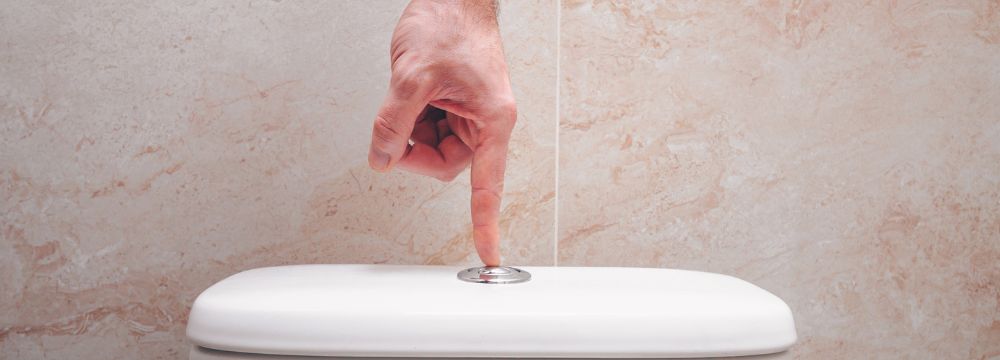What the Color of Your Urine Says About Your Health

Let’s talk about something we all do, multiple times a day, but rarely talk about: urinating. Turns out, your urine can reveal a lot about your health, including hydration levels, liver function, possible infections, and even rare genetic conditions. Your urine is like your body’s liquid report card. Sometimes, your body drops hints in the toilet bowl, and it’s worth knowing what they mean.
The Gold Standard
Let’s start with the good news. If your urine looks like watered-down lemonade or golden apple juice, that’s your body’s way of saying things are running smoothly – you’re likely doing just fine in the hydration department. The yellow color comes from urochrome, a pigment your body makes when it recycles old red blood cells.
The more diluted your urine (meaning the more water you’ve had), the lighter the color. The darker it is, the more concentrated it is. So if your pee looks like a strong cup of tea after a long run or a hot day, it’s time to refill the tank and hydrate.
Crystal-clear urine might feel like a win, but if it looks more like tap water than urine all the time, you might be overdoing the fluids. If you’re constantly drinking water throughout the day and your urine is nearly colorless, you may be flushing out essential salts and minerals that your body needs to function correctly.
But hydration is just one part of the story.
If your stream looks more like water than urine all the time, and you’re not constantly drinking fluids, it could signal an issue like diabetes or even kidney problems, especially if it’s accompanied by other symptoms like fatigue or excessive thirst.
Red Flag Territory
If your urine looks more like root beer than lemonade, your body may be signaling a need for water or alerting you to a possible liver issue. Especially if you also notice yellowing of the skin or eyes, it’s time to consult your doctor. In some cases, this darker color might stem from blood breakdown inside the body due to an infection, a kidney condition, or a rare disorder called porphyria, which affects the skin and nervous system.
Foods like beets, blackberries, and rhubarb can cause your urine to turn pink or red – this is harmless and temporary. But if you haven’t recently raided the produce aisle, a red or pink hue may be a sign of blood in the urine, known as hematuria. That can result from kidney stones, urinary tract infections, an enlarged prostate, or, in some cases, bladder or kidney cancer.
Strenuous exercise, like marathon running, can also cause temporary blood in the urine due to bladder trauma. So if you just ran 20 miles, good job… but also consider calling your urologist if it doesn’t clear up by the next day.
Orange urine might mean you’re not drinking enough water. But it could also be your body’s way of flagging liver or bile duct issues, especially if your stool is unusually pale or your skin looks yellowish. Certain medications and supplements can also cause your urine to take on a bright orange hue.
Green or blue urine is an unusual suspect, but it does happen. This color spectrum can be due to surgical sedatives, certain medications, food dyes, and, in rare cases, bacterial infections or genetic conditions. It’s not what you expect to see when you go to the bathroom, and it can be alarming, but it isn’t always a cause for concern. Still, get it checked out.
Purple and black are also rare ones. Purple is often tied to something called Purple Urine Bag Syndrome, a condition that happens when certain bacteria break down tryptophan (an amino acid from food), often in people with catheters. Smoky, dark, or black urine can be observed in rare metabolic disorders. One of them is alkaptonuria, a genetic condition in which the body is unable to properly break down specific amino acids, resulting in a buildup of a dark pigment in the urine.
The texture of your urine can also provide clues about your urologic function. Cloudy urine can indicate urinary tract infections or kidney stones, and may also suggest the presence of pus or crystals in the urine. Foamy or fizzy urine, on the other hand, might just be the result of a strong stream hitting toilet water, which, of course, is harmless. However, frequent foaming may suggest excess protein in your urine, a potential early sign of kidney issues.
When to Call the Doctor
If your urine is persistently red or pink (and not from food), dark brown or cola-colored, orange with pale stools or jaundiced skin, cloudy, foamy, foul-smelling, green, purple, blue, or black, it’s worth checking in. While many changes are harmless and temporary, others may be early warning signs of a more serious issue.
Urine is often regarded as merely a waste product, but it’s also a valuable source of information about your overall health. From hydration to potential health issues, your urine color can offer valuable insight into what’s happening beneath the surface.
The occasional weird color might be nothing more than a beet salad or a new vitamin. But if something seems off and stays that way, it’s worth a conversation with your doctor. After all, your body is talking. Sometimes it just happens to speak in shades of yellow, amber… or bright blue.
Stay hydrated, pay attention to what your urine is saying, and don’t hesitate to reach out to a urologist like Dr. Engel for expert guidance on any persistent or puzzling changes in your urologic health.




